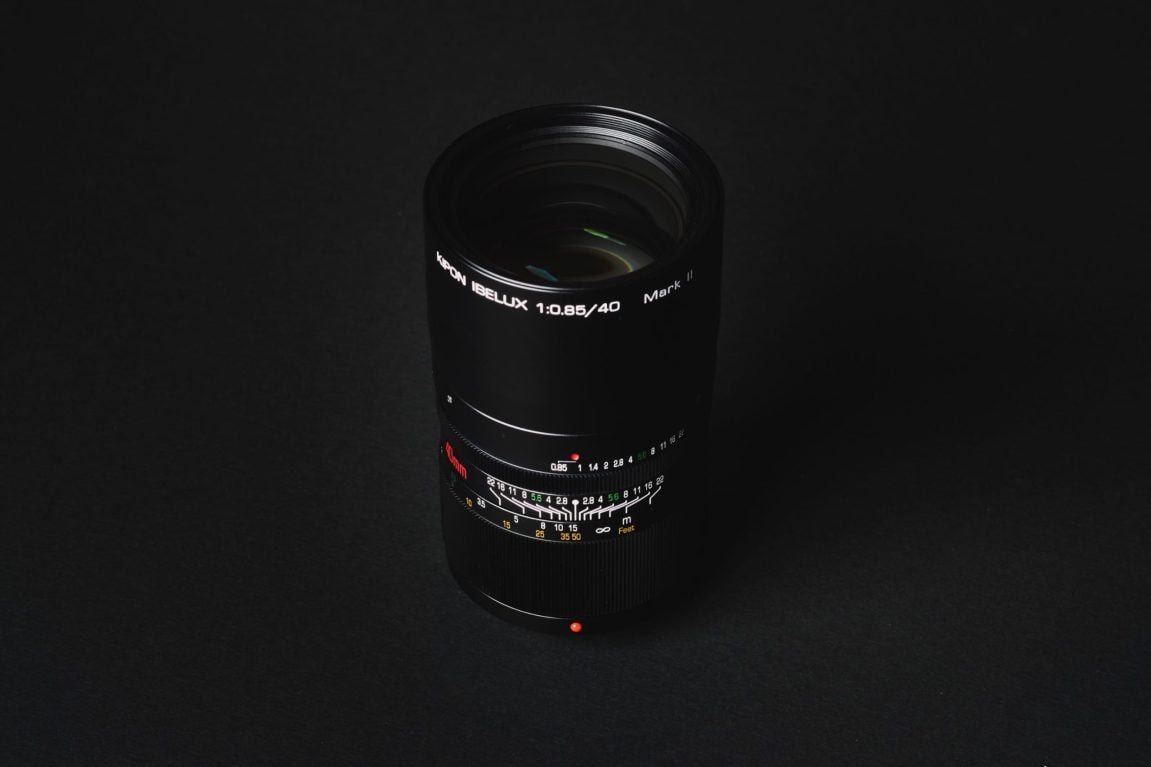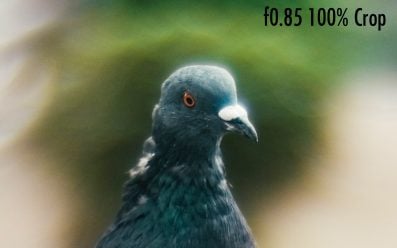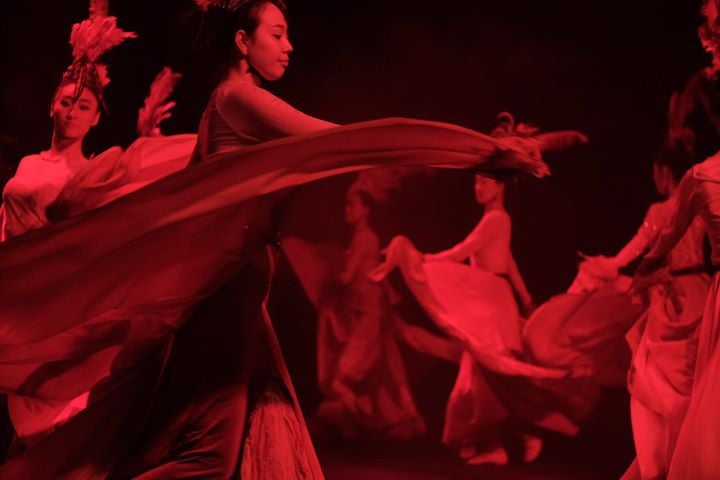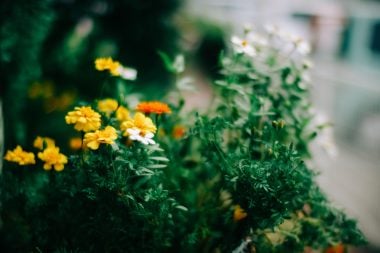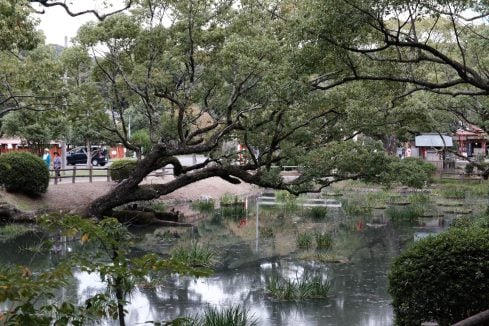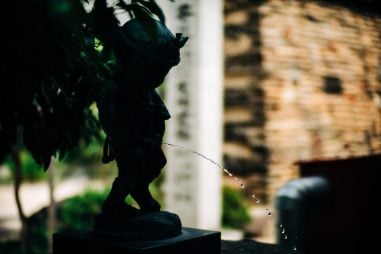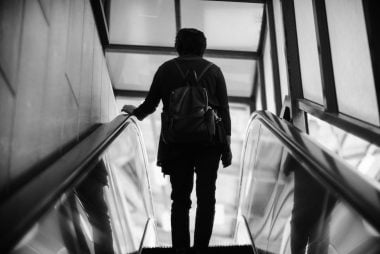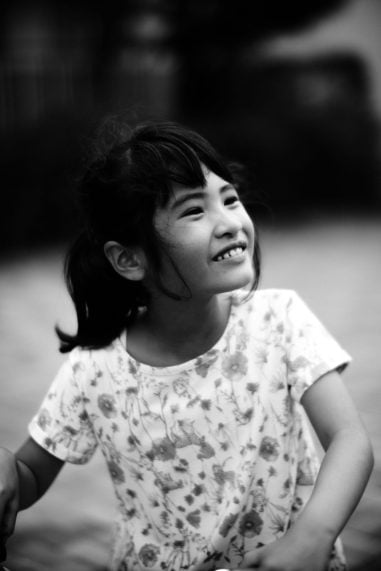Without a doubt, the Kipon IBELUX 40mm f0.85 is one of the most interesting lenses for APS-C shooters to date. This is the brightest lens on the market as well as the fastest. For APS-C shooters that miss the depth of field and low light performance of full-frame cameras, you’ll find all of that here. A 35mm equivalency would give you something like a 60mm at f1.2, except, it’s still going to be 1.5 stops brighter than an f1.2.
When looking at the build, the Handevision 40mm f0.85 MarkII features 10 elements in 8 groups and an 11-blade aperture with an f0.85 aperture for insane bokeh, shallow depth of field, and low light performance. It’s an all-manual lens with an all-metal body and mount for maximum durability. The aperture has full stop clicks and the focus throw is about 250° degrees.
For this review, I’m testing the Mark II. The MkII has pretty much had its build quality upgraded for improved durability.
Lens Specs
Focal Length: 40mm equivalent to 60mm on APS-C cameras
Aperture Blade: 10-blade circular diaphragm
Aperture: f0.85 – f22 full stop clicks
Elements: 10 Elements in 8 Groups
Minimum Focus Distance: – 0.75m / 2.5′
Weight: 1166g | 2.57 pounds
Focus: Manual | 250° Degree Throw
CPU Contacts: No
Construction: All Metal – aluminum, brass, stainless
Filter Threads: 67mm
Available Mounts: Sony E / MFT / Fuji X / EOS M – Right now I only see the Mark II available in the X-Mount.
Pros – Extremely shallow DOF, very creamy puffy bokeh, nice corner and edge performance when stopped down, sharp in the center, great bokeh at all apertures.
Cons – CA wide open, the tendency for highlights to bloom wide open, vignetting at f0.85-f1, big, heavy.
KIPON IBELUX 40mm f0.85 Mark II – Amazon / Adorama
Handevision 40mm f0.85 MKII | Overview
This is a pretty special lens and there isn’t a lot of information about it, in this article I will break down everything, showing the strengths and weaknesses as well as some tips on how to get the most out of it. If you decide to buy this lens, hopefully after reading this review you’ll know exactly the behavior to expect.
This is a fairly expensive lens for APS-C shooters and I do need to make sure I get this review right so you know what you’re getting into if you decide to grab this beast.
Technical Performance
I’ve been testing this lens for over a month from when I posted this review and I’m very impressed. This lens has some really amazing attributes, but as you can imagine with any lens this fast, it does have a few limitations that I’ll get into.
Stopped down, it’s very sharp with fairly nice corner performance which I was not expecting at all.
Wide-open, it’s a little softer, which is pretty standard for ultra-fast primes, and there is a performance sweet spot between about 3-20 feet at those faster apertures.
It’s only real flaw is the CA and some bloom when shooting in bright, harsh environments at f0.85 and f1.
There is also a bit of vignetting until f1.4.
These samples of the pigeon were shot JPG with the XT3. JPG is usually a little soft with Fujifilm. I’ll get some more up when RAW is available, I also had a UV filter on. Nano slim B+W. I totally forgot to take it off after traveling for the day. I do have the RAW for this shot I’m just waiting for Adobe conversion since I don’t trust other software yet.
Using Studio Strobes
The burning question is, will you need ND filters if you’re using studio strobes at f0.85? The answer is maybe. I shoot with the Paul C Buff Einsteins and I must keep them on almost the lowest setting. The X-T3 with ISO 160 actually helps and if you’re Sony then ISO 100 will be even nicer. If you can’t shoot low power like you can with the Paul C Buff Einsteins, then you might need some ND filters. If you want to shape the light with a two or three-lighting setup, then you might need to go a little brighter on your Key which means you might need an ND filter.
The Rendering
I would call this an Art Portrait lens. It’s a bit more dreamy at the faster apertures until about f1.4. If you’re a wedding shooter, the moms will love you.
The rendering produces an incredibly creamy bokeh with slightly warmer tones and the bokeh is a nice puffy kind of ethereal bokeh.
It actually seems like this lens is sort of two lenses in one. At f0.85 and f1, it’s a very artistic creamy bokeh beast, then you click over to f1.4, and its suddenly a different lens, with almost no vignetting with really nice sharpness and contrast.
While shooting at f0.85 is fun, you’ll get a slightly more controlled image at f1 with almost no loss in bokeh quality.
Who makes this lens?
This lens is branded under the name Kipon, aka. Handevision. It’s designed in Germany and assembled in China. The guys over there at Kipon are pretty hardcore Leica shooters and their goal is always quality as is seen with the Kipon adapters and the Handevision lenses.
Here are some sample photos taken with this lens by Xiaoming Zhang, the owner of Kipon.
I’ve reviewed several of the Handevision lenses and they all are really cool with classic designs and rendering. The purpose of those IBERIT Handevision lenses is to give shooters compact full-frame lenses that have a classical rendering with a little bit of tamer and more modern design and output.
This IBELUX is an APS-C lens designed for portrait and art photographers. It’s a bigger lens, about the size of the Fujinon 80mm macro lens and it is on the heavy side because of those f0.85 elements.
Who Is This Lens For
The IBELUX is a specialty lens for portrait or art photographers. It’s big and it’s heavy so you won’t want to be running around with this one dangling from your camera strap.
The design goal of this lens was to produce the fastest and the best portrait lens with nice colors and contrast straight out of the camera with no sacrifices, I’m thinking they came very close to accomplishing that goal. I actually really like this thing. It’s a lot of fun to shoot with even though I don’t really shoot portraits except for some casual stuff with my daughter.
Filmmakers Will Love This
Although this is a portrait lens, I’m thinking it might make a nice lens for filmmakers if they don’t mind the full-stop aperture clicks. It will be very difficult to pull focus at f0.85 but the image quality would be very beautiful and it’s way better than anything I’ve seen from SLR Magic. – I have the SLR Magic 50mm f1.1 and the 35mm f1.2. SLR Magic lenses in general have a severe issue with decentered elements and they can also seize up in cold weather.
Any lens that’s extremely fast like this is going to produce some spherical aberrations and chromatic aberrations in some situations. You will see a little bit of it at f0.85. By f1 it drastically improves, then by f1.4 it’s just nothing but awesome from thereon.
There is a drop in micro-contrast at f0.85 but again, I see these things in all my fast lenses from my SLR Magic f1.1 lenses to my Mitakon f0.95.
I would say for video, you could live at f1.4 with this lens and have an overall really nice experience with great images, then drop it down to f1 or f0.85 for those special moments.
Kipon 40mm f0.85mkII | Capabilities
I’ve been using the Kipon 40mm f0.85 for just about everything so I can get the full spectrum of its capabilities.
So far when shooting at f0.85, I’m noticing it’s best to work within ranges of about 3 – 20 feet. Any farther and it gets very difficult to focus nor will it give you the most detail as you’re approaching infinity. But I can’t really imagine a lot of people shooting models at infinity focus at f0.85. That seems a little silly.
Stopped down to f5.6 and the lens is just a sharpness monster. It’s so crisp and the rendering is so pretty even at infinity. I actually really like the look of this lens, it produces some very beautiful images even if you’re just shooting for fun at slower apertures.
Kipon IBELUX 40mm f0.85 mkII Review | Build Quality
The IBELUX 40mm f0.85 is constructed of 10 elements in 8 groups and 10 blade apertures for smooth bokeh at all apertures. The body is constructed of an aluminum outer barrel, brass core, and a stainless mount.
Most of the Kipon / Handevision lenses are built in a classical style, like a lot of the Voigtlander or Leica lenses. The overall build quality of the IBELUX is very close to the best of Voigtlander, and if you stripped the logos and told me it was a Zeiss or Voigtlander I would probably believe you. Handevision lenses are generally nice in terms of build quality which is why I own so many of them, and this is the best I’ve seen from them so far.
This IBELUX is a tank with really nice precision. It has a very smooth focus with about a 250-degree throw. The aperture clicks are a full stop and they feel nice. Not too hard to turn and you won’t turn them by accident.
The lens does not telescope when focusing nor does the front element move. All focusing occurs within the lens and there is no external barrel or element movement.
There is a retractable lens hood that actually stays in place feels smooth and glides very nicely.
Overall, the IBELUX build quality won’t let you down and they upgraded it a bit for the Mark II. For example, they changed out the mount by making it stainless, they changed the lens hood slightly, improved the coatings and made some adjustments to get rid of some dicentric issues.
The lens ships in a nice padded box which is a great way to store the lens when not in use. Also included is a nice leather padded lens case for travel.
The lens cap is metal and screws on. You’ll probably want to get a slim UV filter to protect the front element since it sits right up against the filter threads.
Handevision 40mm f0.85 MkII Review | Technical Overview
When you’re dealing with ultra-fast lenses like the 40mm f0.85, you have to understand that the lens has been designed for a particular purpose. It’s not a landscape lens, so you can’t compare it the same way. Most lens reviews only look at sharpness, CA, vignetting, and distortion then call it a day. But what makes an art lens great is the color rendering, foreground-to-background separation, the style of the bokeh, and the contrast.
While the technical score of this lens is good, it’s not going to match something like the Fujinon 56mm f1.2 in terms of corner-to-corner performance. I’ve actually yet to find a 40-60mm APS-C lens that can beat the Fujinon 56mm f1.2 in a technical score.
However, compared to the Fujinon 56mm, this lens still has its own quality that you could never get from the Fujinon. Mainly it’s about a 1.5 stop faster and has a very creamy smooth bokeh and rendering even at higher apertures, whereas the Fujinon 56mm kind of always needs to live at f1.2 if you’re shooting for bokeh.
Sharpness
Center sharpness is fantastic with this lens. I compared it to the Fujinon 56mm f1.2 and they are both very similar. This is also a touch sharper than the Rokinon 50mm f1.2.
This IBELUX is in the top tier of sharpness for any lens that I’ve seen on APS-C cameras and I own almost all the prime lenses available in the X-Mount in the 35-60mm range.
It’s obviously not as sharp at f0.85 compared to f1.2.
Corner sharpness is good but there is better out there. The Rokinon 50mm f1.2 gives better results as well as any of the Fujinon lenses. However, this is an insanely fast portrait lens so I wasn’t really expecting it to have perfect corner details.
Distortion
There is some very minor barrel distortion but there is a Lightroom profile for this lens that will correct it.
Chromatic Aberrations & Color Fringing
You’re going to need to stay away from harsh highlights when opened up on this lens. Any bright white will bloom and if is adjacent to some dark color or shadows you may see some blue or green fringing.
By f1.4 everything stabilizes.
You can see the CA in these high-contrast situations in the out-of-focus areas. It will be purple/blue in front of the focus point, and green behind the focus. Sometimes it cleans up right away with Lightroom’s defringing tools, sometimes you will need to do manual work in Photoshop.
While the fringing only happens in high-contrast situations,, the bloom is something you’ll have to watch out for when you’re lighting your models. This seems to be the common trend with these ultra-fast lenses.
The last two shots have spiders so don’t click if you can’t handle spiders.
Below is a 100% cropped in shot. You can see how the fringing affects the fingers against a highlight in the background. When it’s back-focused like in this shot you will see blue, when it’s front-focused it will be green. This only happens at f0.85 and f1.
This is one of the best samples I could find to show you this issue. When it’s this bad it’s a little difficult to correct in Lightroom and you’ll likely have to use Photoshop to isolate the color and region.
Vignetting
Some corner vignetting at f0.85 and f1. By f1.4 vignetting is reasonable and by f2 the vignetting is actually brighter along the edges.
Art & Character
There is a lot to talk about with art and character between lenses. Some lenses will have a single lens coating and give you really cool flaring and ghosting, some lenses have really nice focus falloff. Some lenses have really unique bokeh, with soap-bubble patterns or swirls.
This lens is all about producing a smooth and almost creamy ethereal look at the faster apertures. When you stop down to f1.4 you lose the dreaminess and are left with overall buttery smooth bokeh and very soft falloff.
There is some flaring but it’s well-controlled and the color and rendering is warm with nice contrast.
At f0.85 and f1 you do lose out on some contrast and micro-contrast and will have to stop down to f1.4 to get it back. I find I usually have to add a little contrast when I’m shooting at f0.85 and f1.
Bokeh
Bokeh is very nice. It’s kind of ghosty ethereal puffy bokeh at the faster apertures. There is some minor swirl as well. This is one of the best bokeh lenses I own.
To get the best bokeh though you’ll want your subject as close to the lens as possible. If you move too far away from the subject you will begin to lose some of that subject isolation. Pretty standard of any 35-40mm lens really.
Sun In Front vs. Sun Behind | Working With Harsh Highlights
There will be a noticeable difference when the subject is backlit vs when the light is behind the camera.
Lens Flaring
Flaring creates an interesting pattern. A large ring with a few circles in the middle if the angle is right. For the most part, flaring is pretty well controlled unless you’re shooting directly into bright lights.
Color Rendering
Compared to a lot of my other third-party lenses, the colors render with warm soft tones. There is no real strange color cast or color shifts.
At f0.85 and f1 you will have to add some contrast if you want the colors to pop. They are a little muted at those fast apertures. By f1.4 everything comes together and contrast and color is more vibrant.
Micro-Contrast
I wouldn’t call this a high micro-contrast lens but it’s still better than most fast zooms. Using strobes will definitely increase the pop as well so it’s not an issue.
This thing is a solid barrel of glass, so there is a lot of material for light to pass through. If you need more micro-contrast with this lens, you will have to shoot stopped down. Things start to get good at around f2. This is actually why I say this lens is kind of like two lenses in one. At f0.85 and f1 it’s a dream machine, then at f1.4 it becomes a lot sharper with nice colors and contrast.
Here are some straight-out-of-camera samples to show color and contrast. You can see the colors are very natural and the contrast is really good at f5.6. These are shot with the X-T2 or X-T3.
You can see the full-resolution samples here.
KIPON 40mm f0.85 MarkII Review | Bottom Line
There are a lot of cool lenses out there you can get or adapt to APS-C cameras now, but this by far is one of the most interesting and unique lenses I’ve seen. Quality is very high and there really isn’t much out there like it in terms of speed except maybe for those Mitakon Speedmasters. SLR Magic has a few f0.95 lenses for various mounts as well.
Compared to this lens, they’re all very different, although I haven’t tried the f0.95 SLR Magic lenses and probably never will due to the severe dicentric issues I experienced with 3 out of 5 lenses I got from them. The Mitakon puts out a totally different colder rendering and bokeh with their polymer elements, so I would have put them in a different class.
I would say the Mitakon Speedmaster is more of an art street lens because of it’s colder rendering with harsher focus fall-off and simpler bokeh, while the IBELUX is more of an art portrait lens, with very warm colors and creamy puffy bokeh. Corner to corner the IBELUX is also a little nicer in terms of sharpness, but wide open the Mitakon has more control over the CA and is less dreamy due to its ultra-high refractive elements. I have both lenses and don’t really feel like they overlap in terms of attributes so I find myself using them both for different situations. For portraits, the KIPON hands down creates a prettier image, in my opinion, it’s also about 1/4 – 1/3 of a stop brighter.
Although this isn’t a video lens, I think video shooters will really like it. The only other lenses I’ve seen that are fairly fast and made for video are the SLR Magic lenses, and as I mentioned, build quality is pretty bad with those.
If it wasn’t for the 67mm filter threads, this would have been perfect for the Anamorphot 50. I guess you could still use a step-down ring, shoot 4k then crop or just get a mark I micro four-thirds copy for a GH5 or something.
Tricks To Mastering Focus
The Kipon 40mm f0.85 is absolutely fantastic for the portrait shooter looking for a dreamy bokeh with an extremely shallow depth of field. You used to only be able to get this look with full-frame but now you can have it for APS-C if you can learn to manually focus.
If you have subjects that know how to hold still, then it’s not that difficult to use because you can get very precise with the smooth and long focus throw. If I can sort of manage it with a 3-year-old, you can too. It does take some time and trial and error if you really want to perfectly nail that focus on the eyes to see the detail in the lashes. It also performs best when you’re fairly close to your subject, 3-20 feet at those faster apertures.
When not using strobes, burst shooting will be your friend especially when shooting twitchy kids. As your bodies sway, so will your extremely small point of focus, and doing a 10-20fps burst will make sure the point of focus lands in at least a few shots. Sometimes I’ll shoot a burst and intentionally back focus every so slightly then sway to front focus through the burst. That can sometimes help.
I’ve also found that focus peaking often makes me back-focus just a bit, so I try to pull a little shallower than what the peaks are telling me.
Final Thoughts
Handevision has really done an amazing job with this lens and it’s very fun to use even if you don’t shoot professionally.
Hopefully, after reading this review you’ll know what you’re getting into if you decide to grab one. This is a specialty lens and you won’t like it if you think you’re just going to be able to pick one up and run out to your kid’s soccer game and pull off amazing shots.
You really need to be at the right distance under fairly calm lighting at f0.85 to f1 and it does have a 0.75m minimum focus distance. This lens is big and heavy so you should always keep a hand on it to protect both the lens and camera mounts, especially if you shoot with Sony APS-C cameras, which often have cheaper mounts.
KIPON 40mm f0.85 II vs Mitakon 35mm f0.95 II
After seeing a lot of people react to the existence of this lens, most people seem to bring up the Mitakon 35mm f0.95. I did a lot of side-by-side with the Mitakon when evaluating the KIPON. I’ll do a full article in the future when I have more time, but here is what I found to be the difference between the two lenses.
Center Sharpness
I’ve built some charts and overlaid them in Photoshop going back and forth. It’s very close, based on my copies.
Except to see a lot of copy-to-copy variation, especially with Mitakon, so only use these charts as a general guide, and it’s typically a really bad idea to judge a lens based on sharpness alone.
My Kipon is looking nicer at the fast apertures up to about f2-f2.8. Then stopped down the Mitakon has better results at f4-f8.
Often when looking at real-world sample photos, the Mitakon will look sharp because the images with the KIPON will have a dreamy quality to them. Also, the Kipon is f0.85, the Mitakon is f0.95. So there is shallower depth there and I’m not sure the Mitakon f0.95 is actually rendering the depth of an f0.95 lens. I need to do more tests but the depth doesn’t look as shallow as the Kipon even at f1. It’s possible Mitakon is cheating on their specs. I’ve seen a lot of cheap lenses coming out of China that aren’t rendering according to the apertures they are listed at.
On my copy with this chart, the Kipon is slightly sharper at f0.85 than the Mitakon at f0.95. But it’s close, there is copy-to-copy variation and it’s extremely difficult to get perfect results on a test chart with lenses this fast.
Corner Sharpness
With corner sharpness, the Kipon is noticeably better at faster apertures. Stopped down the Mitakon is nicer starting at around f4 and on.
Bokeh
Bokeh on the KIPON is better at all apertures, much softer and more pleasant, with a puffy quality to the highlights. It’s actually really nice, but that could come down to a matter of preference. If you want a fairly inexpensive nice bokeh 35mm, the SLR Magic 35mm f1.2 is actually quite nice, just good luck getting one that is properly centered and doesn’t freeze up in sub-zero temperatures. If you want even cheaper, the 7Artisans 35mm f1.2 is a fun lens to mess around with. If you want the best, the Voigtlander 40mm f1.2 is it.
Depth of field is also shallower on the KIPON and nailing focus when shooting kids in this review has been very challenging. Focus has to be perfect or it looks soft. The Mitakon gives you a little bit more room for error, it might not actually be an f0.95 in terms of output, I’d have to do more comparisons before I’m sure.
Contrast / Pop
Images are more punchy with slightly better contrast and micro-contrast on the Mitakon when wide open, stopped down, it’s a little closer.
Color Rendering / Lens Design
The KIPON has a softer warmer color rendering whereas the Mitakon has a harsher blue or cool rendering. Probably as a result of the Mitakon using ultra-high refractive elements (plastic), which is actually where things seem to be going. Most fast new lenses by Sony or even Voigtlander seem to use at least one of these types of lenses now. Just not three. The KIPON still uses more of an old school Leica-like lens design. That is what they were going for.
The Kipon will probably last longer as there are no external moving barrels to suck in dust when focusing. The Mitakon telescopes out when focusing and now if anything touches that outer barrel, like my finger, the focus sticks. I could just have bad luck. I have seen more issues with Mitakon lenses than Handevision lenses in general.
Conclusions
Really they are two different lenses with different outputs. If you only care about sharpness, the Mitakon is a great run-and-gun lens, I love it. Mine after a year is starting to have some sticky focus issues though. This Kipon is a different beast, it’s not for everyone, and you have to work with it, but the bokeh and focus falloff is really nice. I really wish the KIPON had an f1.2 click on the aperture because I can sort of sit the aperture right between the f1 and f1.4 at about f1.2, and I’m discovering f1.2 is a really nice spot on this lens. I’ll have to compare it to the Voigtlander 40mm f1.2 as well I guess.
Hope that helps!
Disclaimer: Yep, Kipon did send me a free copy of this lens. I still did my best shooting with it for over a month to find its strengths and weaknesses and point out everything I thought could cause problems. My goal with this review was to educate you about how this lens was designed and who it is for so you don’t waste money and give a bad review by buying something that isn’t what you’re looking for. Like I saw a review give a one-star and they said this lens made their images grainy. That doesn’t even make sense.
Kipon spent a lot of time and money with this lens and everything was killed last year with a bad review where the reviewer didn’t even shoot with it or show any photos. I’m not sure big Youtubers know the power or responsibility they have and they seem very lazy these days
Since then, Kipon has refreshed the build quality for a strong comeback. Right now they’re just looking for honest people doing honest reviews to get the word out. It’s no secret that Kipon makes good stuff and I even bought most of their Handevision lenses and will buy more because I love the classic style and design of their lenses. This lens is just another great product from Kipon which is a brand hopefully you can trust.
Bias or not, I think the sample photos really speak for themselves and I put this lens in my top 5 favorite lenses for Fuji X-Mount.
If you’re into Kipon, also check out the Kipon 75mm f2.4 lens, it’s a true gem. And my most used third-party lens is the Kipon 35mm f2.4.
Kipon IBELUX 40mm f0.85 Sample Photos
Samples images shot with the Fujifilm X-T2 and X-T3.
| **This website contains affiliate links. We will earn a small commission on purchases made through these links. Some of the links used in these articles will direct you to Amazon. As an Amazon Associate, I earn from qualifying purchases. |

